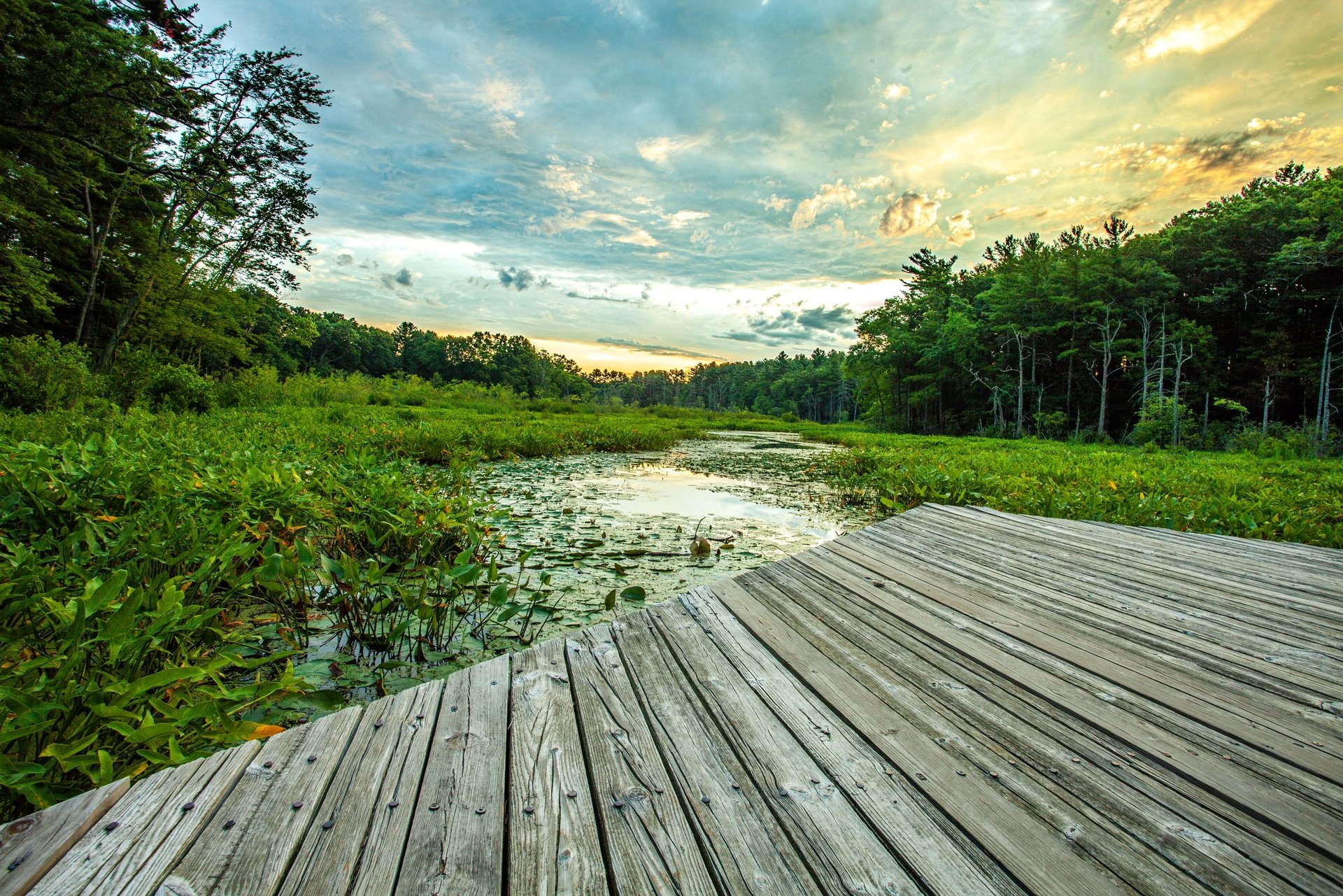Trail Re-routing at Broadmoor Wildlife Sanctuary
December 22, 2022
Ever wondered why trails curve, slope, and climb the way they do? You might think this is by chance, but very careful planning goes into the creation and maintenance of trails. Not all paths are created equal, and there is a right and wrong way to go about forging and maintaining them.
What makes a trail sustainable?
Over time, trails change. Soil is packed down from people tramping over it, drought conditions can create dust, and heavy rain leads to erosion. Other times, trails need to be re-routed to protect vital habitats for species that call an area home.
Climate change and more extreme precipitation events have changed our trails. Beavers, too, can alter water levels, which impacts where paths can be placed. Not only do our trails need to offer visitors a scenic walk, but also need to preserve habitats and minimize disturbances of wildlife at our sanctuaries.
Sustainable trails use careful design and analysis to create paths that will stand the test of time.
As part of a $420,000 capital campaign, Preserving the Path: Sustainable Trails for the Future, Broadmoor is evaluating and improving the nearly 8-mile trail system at the sanctuary for habitat and wildlife protection and the comfort and safety of visitors.
Glacial Hill Trail Re-route
Trail maintenance at our sanctuaries is always a work in progress. Recently, the trails team at Broadmoor tackled a much-needed reroute of the Glacial Hill Trail. The original trail, an old cart path that was used when Indian Brook was home to two operating mills, traveled in a straight line adjacent to the orchard. Over time, people walking on it and water pooling in it created a deep rut. When a trail becomes concave, it doesn’t allow for proper water movement, leading to standing water and ineffective runoff. This creates potentially unsafe walking conditions as rocks and roots become exposed.
Ideally, a trail gently slants and slopes, allowing water to run in different directions when it rains. Rather than the Glacial Hill trail running straight down the edge of the meadow as it did, it has been re-routed to gently turn left towards Mill Pond. The new trail also forks to the right, bringing you to the outlook in the middle of the meadow.
The Path Forward
Over the coming months, the Metro West Trails Team will be working on another portion of the Glacial Hill Trail that needs additional puncheon bridging. These projects add to the previously evaluated and re-routed Charles River, Quaking Frog, and Boundary Trails. A proactive approach to trail maintenance will help catch and address issues early and reduce the number of costly and time-consuming repairs over time.



